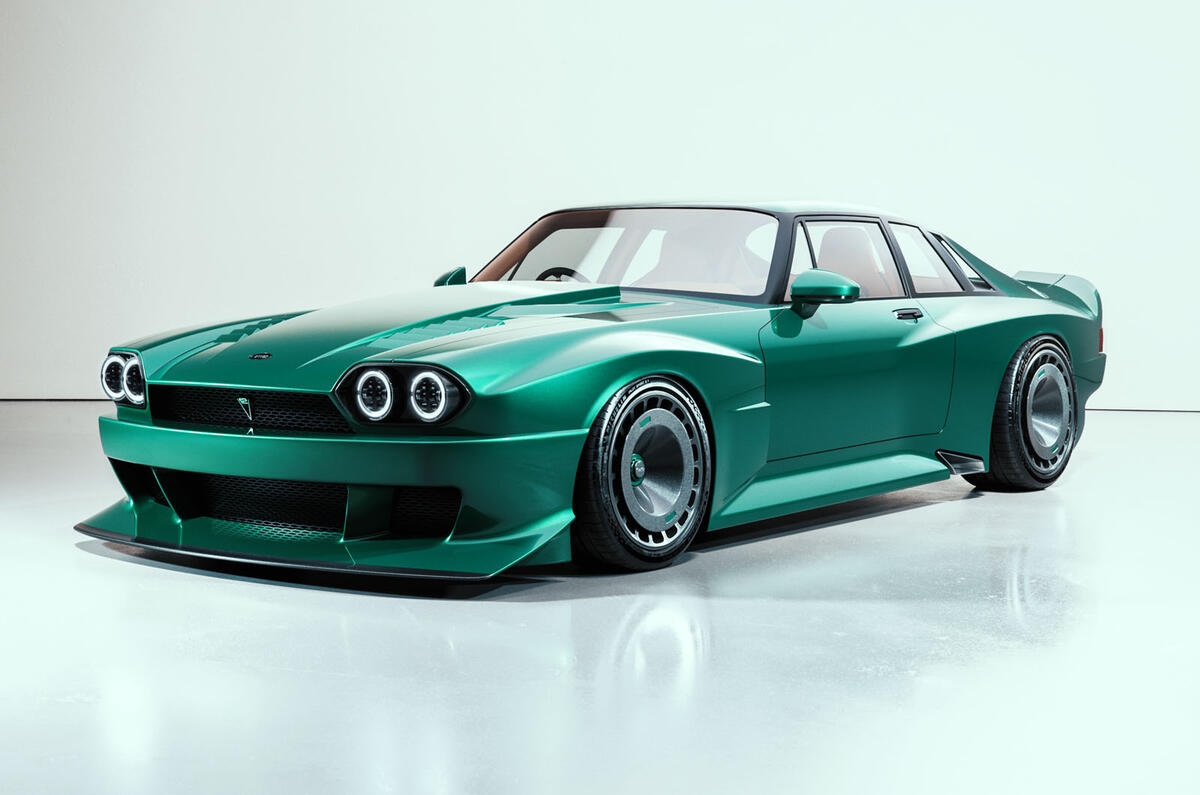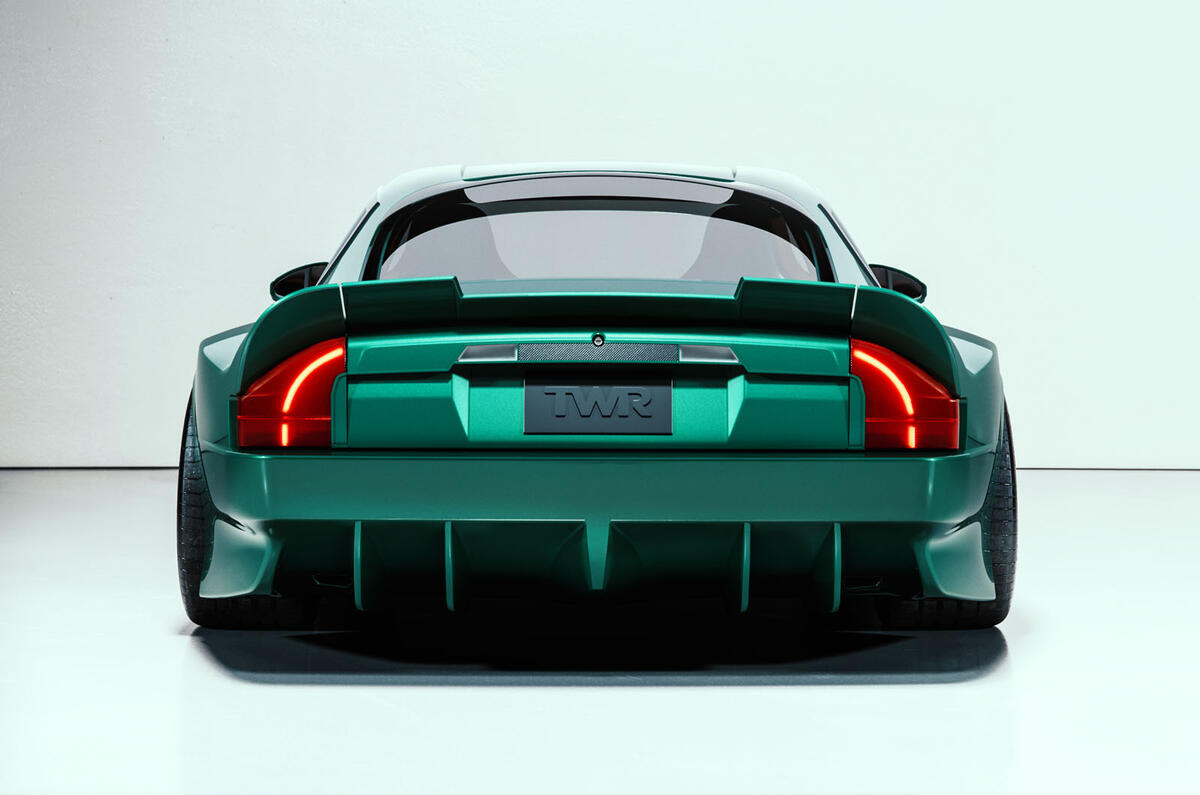British engineering firm TWR Performance has revealed an outlandish, 600bhp reworking of the Jaguar XJS as its debut production model – complete with carbonfibre bodywork, a supercharged V12 and a manual gearbox.
The first project to be unveiled by the Berkshire-based firm – a firm founded by the son of famed team boss and driver Tom Walkinshaw – sees the 50-year-old British coupé reimagined as a high-performance super-GT, aptly named the Supercat.
The XJS’s sleek, smooth shape has been treated to an aggressive redesign reminiscent of 1980s endurance racers courtesy of digital designer Khyzyl Saleem and renowned Porsche modifier Magnus Walker.
The track width has been significantly extended compared with the original car, with the custom aero disc-style wheels peeking out from a bespoke set of wide arches.
At the front, a large splitter reaches across the vent-heavy front bumper, with halo-style LED lights recessed into the hexagon-shaped apertures that are a key design feature of the original XJS. As with every other panel on the car, it’s an all-new design manufactured from carbonfibre.
At the rear, new brake lights sit above a massive diffuser that spans the width of the car. Flying buttresses flow from the roof to the bootlid, feeding into a sizeable ducktail spoiler, with flics on each side that are reminiscent of the Le Mans-winning Jaguar XJR-9’s rear bodywork.

From behind, the arches bend inwards between the top of the flank and the lower bumper, leaving the heavily cambered wheels on full display.
Under the louvred bonnet – complete with a cooling duct that almost runs for the whole length – sits a supercharged V12 pumping out “in excess of 600bhp”. This is a marked improvement from the original XJS, which produced 333bhp in its most powerful form as the 1988 XJR-S, itself developed by the original TWR firm.











Join the debate
Add your comment
The Dukes of Hazard would be pround of such a monstrosity!
Note to the EDITORS:
The Security 'captcha' devives are nor an abolute pain the arse! Time for something different!
The XJS is not even a good looking car (to most eyes). And then these people have gone and made a C-F version that looks like a street machine with a body kit some bogan built from fiberglass in his shed circa 1974. This is the dumbest idea to come out of the car industry in years.
I cannot wait for Frank Stephenson's take on this monstrosity.